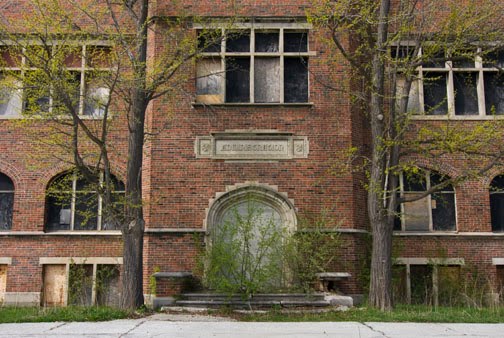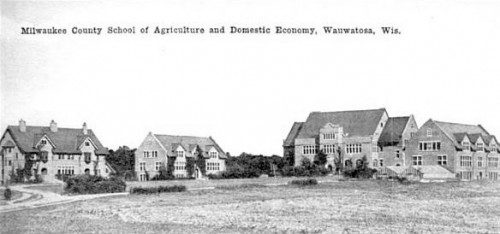Responding to Paul Ryan’s commentary about valuing seniors, Vice President Biden shared some advice he received from his father: “Look, don’t tell me what you value. Show me your budget, and I will tell you what you value.”
It's true, but it goes far beyond one issue. This fall, some of us will be reviewing presidential candidates' priorities when it comes to 1) high-quality building stock, 2) “green” development, 3) preserving cultural heritage in the built environment, and 4) creative reinvestment.
Here in Wisconsin, prior to the June gubernatorial recall election and the flurry of news that went with it, a small trace of information appeared online about Gov. Scott Walker’s history with five notable and historically significant buildings in his hometown of Wauwatosa. Considered a prime site by developers, transportation planners, economic development specialists, historic preservationists, open space advocates, monarch butterfly enthusiasts, and, of course, politicians, these buildings, known as part of the Milwaukee County Grounds, are now part of a political tug of war. Alexander Eschweiler’s iconic institutional buildings on the Grounds pay tribute to a time in American history when educational campuses served as civic centers and the focal points of society.
These tightly-clustered, massive brick structures feature large, arched entries with ascending steps, deep thresholds, and skillfully-decorated reliefs. The textured brick facades are punctured by deep, rigid square openings supported by heavy, smooth stone sills and lintels. Subtly-pointed arches occur seamlessly within the field of brick. The windows are patterned with long horizontal stone sweeps and vertically though the rhythm of pronounced gable dormers. “Eschweiler’s timeless legacy . . . enriches the urban landscape in ways that can never be duplicated,” said local design expert Whitney Gould in 2007.
But, again, as with so many culturally and architecturally relevant sites in the Milwaukee region, Eschweiler’s treasures are on the table for demolition.
Gov. Walker’s involvement with the Milwaukee County Grounds traces back to his time as Milwaukee County Executive, the position he held before becoming governor. In 2009, under Walker, Milwaukee County approved the land sale to the UWM Foundation to develop a research park for the University of Wisconsin-Milwaukee.
As outlined in a May 5th post by The Political Environment citing Milwaukee County First, Walker's involvement in the degradation of the Eschweiler complex demonstrates just how elected officials can choose to leave their mark on our built environment:
“When Scott Walker was swept into the office of Milwaukee County Executive, ironically as a result of a recall election, he had also promised to preserve these treasures, saying that if he were to do anything, it would be to work at having the area designated as a state park.
One of the many bad things that happened . . . is that as businesses and agencies moved out of the county grounds, none moved in to take their place.
By 2006, the buildings stood empty.
The empty buildings quickly started succumbing to the weather, aided by the fact that Walker’s austerity measures prevented the county from taking any preservation or preventative measures, or even allowing the utilities to stay on. He refused even in the face of a letter written by then Wauwatosa Mayor Theresa Estness, which reminded him of his promise to split the cost of sealing the buildings in an effort to preserve them.”
Back to the words of Vice President Biden: one of our key decision-makers in Wisconsin talked of valuing the County Grounds and the Eschweiler buildings, but didn't take the steps to even temporarily preserve them. And this summer, our community is left to make an emotionally- and financially-draining decision about the fate of our cultural heritage by deciding whether or not to demolish part of the complex due to cited challenges from poor building condition.
The worlds of community development and economic development rely on visionaries with an ability to see a promise through. As we look to the upcoming presidential election, and review our candidates through the lens of community and economic development, we should determine how these candidates have supported adaptive reuse of existing buildings, the maintenance of our built environment, and creative community reinvestment.
Who is right for American cities?
This post was co-authored with Michael Hacker.
Main Image Source: https://urbanwilderness-eddee.blogspot.com/2010/05/after-rhetorical-firestorm-wauwatosa.html
Second image: Images of America: Wauwatosa. Wauwatosa Historical Society.







Comments